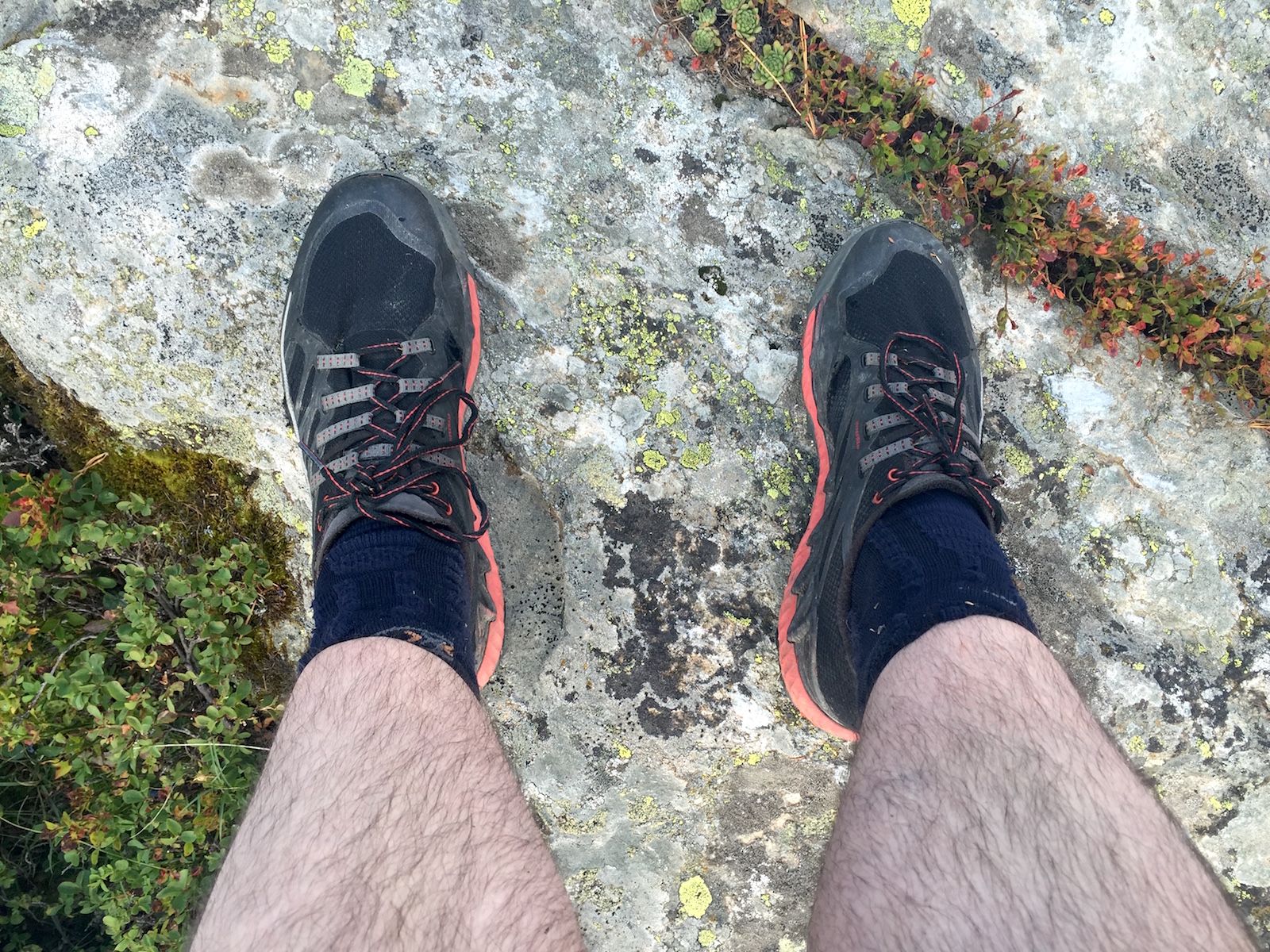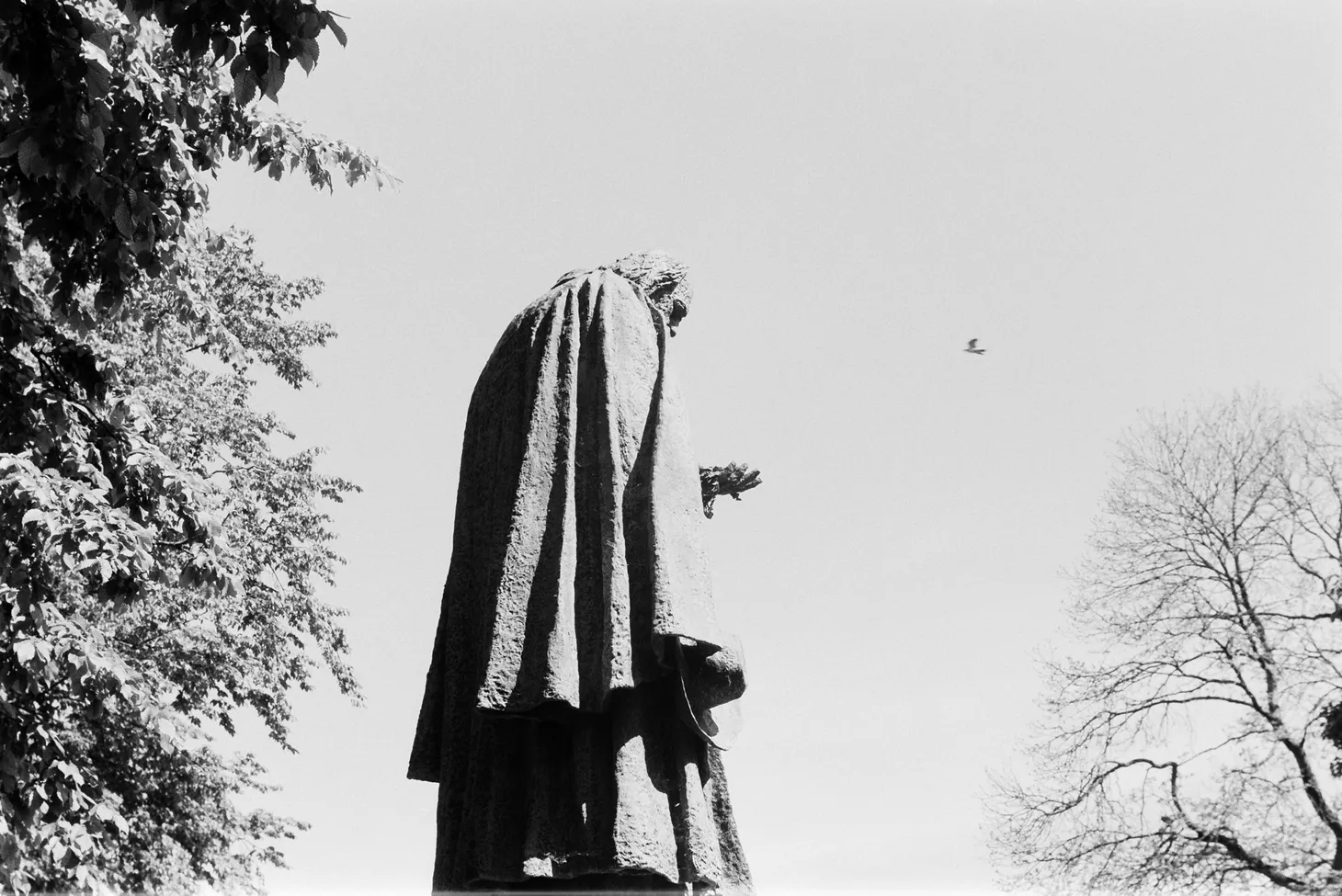Much ado about Naeboots

Lightweight backpacking is great. It lets you walk further with less, live a simple life on the trail, and reduces the risk of fatigue, blisters and injury. Yet in 2015 it’s still a controversial subject.
In October 2015, TGO (The Great Outdoors) Magazine published my feature on thru-hiking the 241-mile Cape Wrath Trail in the Western Highlands. As my readers know, this is a tough route and I experienced some fierce conditions at times along the way. But I was never in any doubt that my ‘fast and light’ approach was the right one. There is a beautiful and minimal simplicity in taking only what you need and no more, and in honing your skills so that you need fewer material items to support your safety and comfort.
However, I’d forgotten that lightweight backpacking is, for some, still seen as excessively dangerous. I was amused to read this letter to the editor in the November issue of TGO.
I read Alex Roddie’s account of his expedition on the Cape Wrath Trail (October issue) with some misgivings. He wore trainers and used a ‘tent’ which would have been more at home on a British beach in summer. Having disclaimed the inadequacy of his kit in the opening lines, and having survived a storm and the bogs of Knoydart, he never returns to reflect on whether he was foolhardy to attempt this route thus equipped. He even says that with hindsight he could have cut another kilo (2.2lbs) from his pack weight!
Having experienced sections of the Cape Wrath Trail and having completed several TGO Challenge events, my concern is that inexperienced newcomers to the real wilderness of the Scottish Highlands, at any time of the year, may be encouraged to set out lightweight but ill-prepared for the conditions they will encounter. If you are not able to carry the weight of suitable kit, you have not done enough conditioning and you should be mindful of taking on realistic daily mileages. Eighteen miles in this country is a long, long way.
John Dodwell
In the spirit of friendliness and openness that I have never failed to find in the wilderness, I’d like to respond to John here.
The safety blanket
I totally get the idea that stout boots, multiple layers of clothing and a robust pack filled to the brim with things can make the traveller feel safe. For many years I followed a similar philosophy. What if there’s a storm and my campsite floods? I’d better take a geodesic tent with a bathtub floor. What if there’s a blizzard? Guess I’ll need mittens and ski mask. And maybe there’ll be hard-packed snow and ice on that pass. Ice axe and crampons it is.
But unless actually needed, these things are best left at home. The weight adds up. That 18kg rucksack, packed with all the things you might need to cope with every possible eventuality, will sap your strength and take miles from your trail every day. It will drive vast amounts of force through your feet and knees, adding up to increase fatigue and sap your energy.
Lightweight backpacking is about using your head instead of packing your fears.
And those big, stout, ‘supportive’ boots? I can’t speak for everyone here, but to me they feel like lumps of concrete swinging on the end of my legs. They make my feet hot and cause blisters. When the water gets in – and it always does – it never drains, and life on the trail is a losing battle against trench foot. I have hiked many hundreds of miles through the mountains with traditional boots, and it has always felt like a massive gamble, whether or not I’ll finish my route without being hobbled by blisters. In the hundreds of miles I’ve hiked in trainers this year, I have not suffered a single blister.
The key is in figuring out what you really need, and in determining what ‘suitable kit’ means in the situation at hand.
Freedom
Lightweight backpacking is about using your head instead of packing your fears. It’s about making critical decisions about risk, using your experience and knowledge instead of blindly relying on a safety blanket of equipment. It’s about freedom and the purity of unfettered movement over any terrain.
Before I hiked the Cape Wrath Trail, I spent months researching the route and the conditions, testing my equipment, and training my body to be comfortable hiking in minimal running shoes. I knew exactly what I was getting into, and other than a few tiny equipment niggles, every item of gear I chose to take with me performed extremely well. At no point did I wish I had taken something I didn’t have with me.
I did not meet a single hiker after trail mile 100 with a big pack.
My trainers, which John believes are so irresponsible in the Scottish wilderness, allowed me to hike 241 miles in comfort, without a single blister.
My ‘beach tent’ may have blown over in Knoydart, but that was due to poor choice of tent pegs and saturated ground – two facts I make very clear in my article. The shelter itself was more than capable of standing up to the worst weather the trail threw at me. Once I replaced my pegs with MSR Groundhogs I had no further issues.
And actually, if John had read my article in its entirety, he’d realise that I had complete faith in my approach and would do it that way again in a heartbeat. My point of view is justified by the fact that I completed the trail, but the guys I met with heavy boots and big rucksacks did not. I did not meet a single hiker after trail mile 100 with a big pack.
Encouraging inexperienced newcomers
I would like to address John’s final point, that my article might encourage inexperienced newcomers to venture into the Scottish wilderness without the right equipment. Every outdoor writer is of course aware that his or her words will be read by a varied audience, and that some individuals may not have the experience to make judgements for themselves about appropriate kit. Obviously, I have absolutely no wish to encourage irresponsible behaviour or add to the burden of the Mountain Rescue teams.
But even the most cursory research on the Cape Wrath Trail reveals that this is not a route for beginners. My own writing on the subject makes that extremely (and repeatedly) clear, and virtually everything else you can read about hillwalking in Scotland emphasises the need to build up experience gradually, hike with others until confident, and invest in good equipment. I really cannot imagine any rational human being taking off into the wilderness having read my article and no other sources whatsoever.
Of course, hillwalkers getting into trouble with insufficient kit is a growing problem. But that has nothing to do with the outdoor magazines, all of which have a long history of emphasising appropriate equipment and building up hill skills. Pick up any issue of TGO or Trail and you’ll see multiple articles on selecting the right gear for various conditions, careful planning, and a variety of routes graded in terms of difficulty. Again – any rational human being will read my article and realise that they need to gain significant mountaineering and backpacking experience before they can hike the Cape Wrath Trail with lightweight gear.
To conclude
I don’t want to give the impression that John’s letter offended me – on the contrary, it made me smile a little, but I don’t despise his point of view or think he’s an idiot. I would probably have reacted the same way five years ago. I completely understand where he’s coming from, but based on my experiences this year I think he’s misinformed and has missed the point of my article.
Lightweight backpacking is becoming mainstream. Slowly, people are realising that they don’t need half the stuff they used to carry, and that applying knowledge and experience can cut kilos from rucksacks. It isn’t about cutting pack weight because you aren’t able to carry it (which is, I think, what John is on about when he mentions ‘conditioning’) – it’s about having more fun in the outdoors.
Lightweight backpacking is brilliant, and like it or not it’s here to stay.
I’d like to finish by sharing Cameron McNeish‘s response to John’s letter. Cameron McNeish practically wrote the book on the CWT (and devised the Scottish National Trail, an extended version of the CWT).
@alex_roddie @townsendoutdoor Ha-ha, join the club. You need a thick skin if you're going to challenge the "stoutboot" brigade. 😉
— Cameron McNeish (@CameronMcNeish) October 20, 2015
Alex Roddie Newsletter
Subscribe here to receive my occasional personal newsletter in your inbox. (For the fun stuff, please consider subscribing to Alpenglow Journal instead!)



